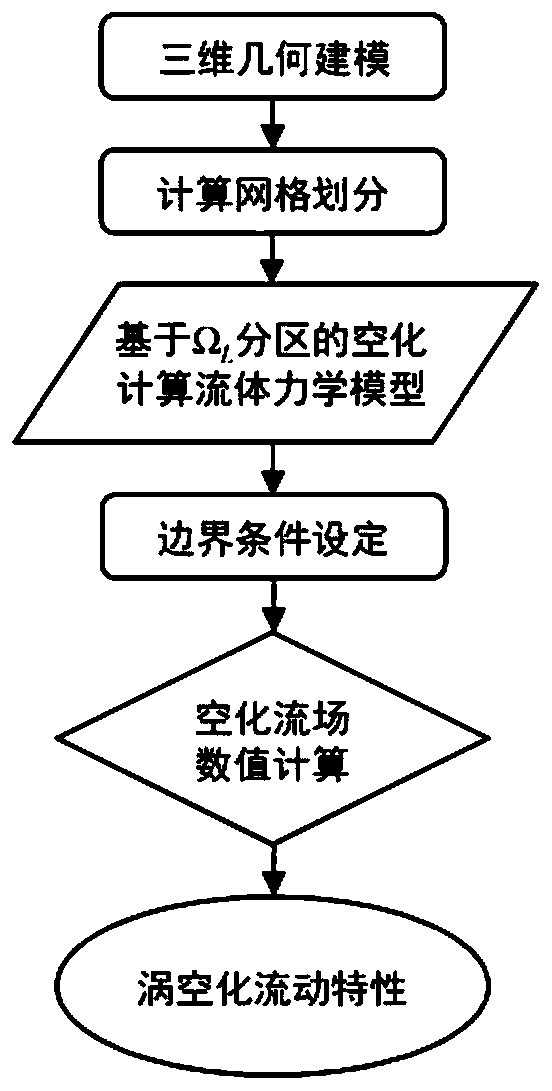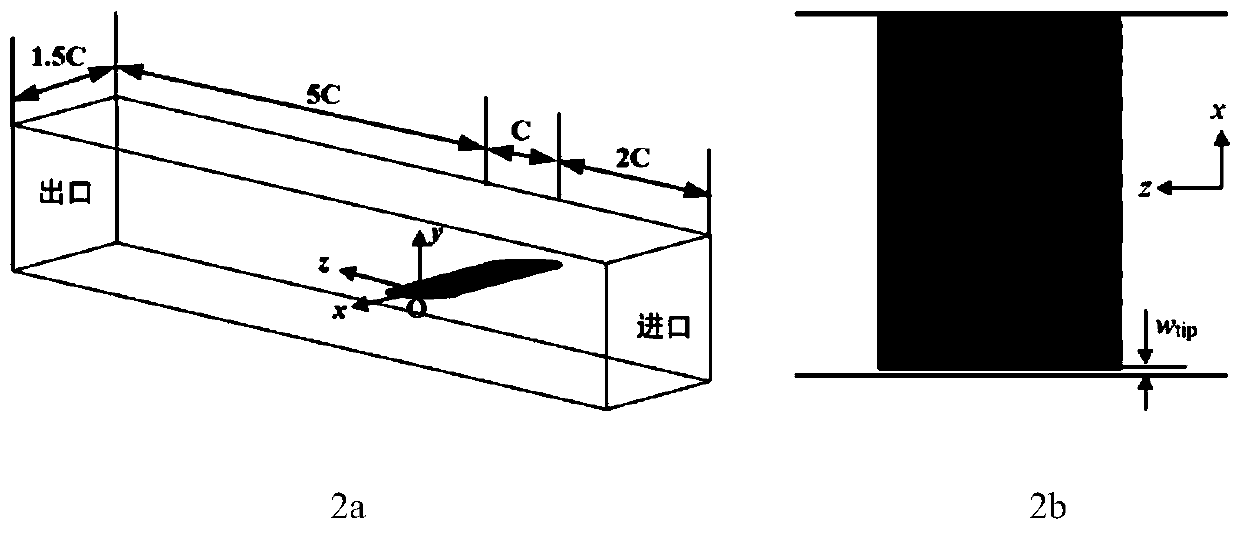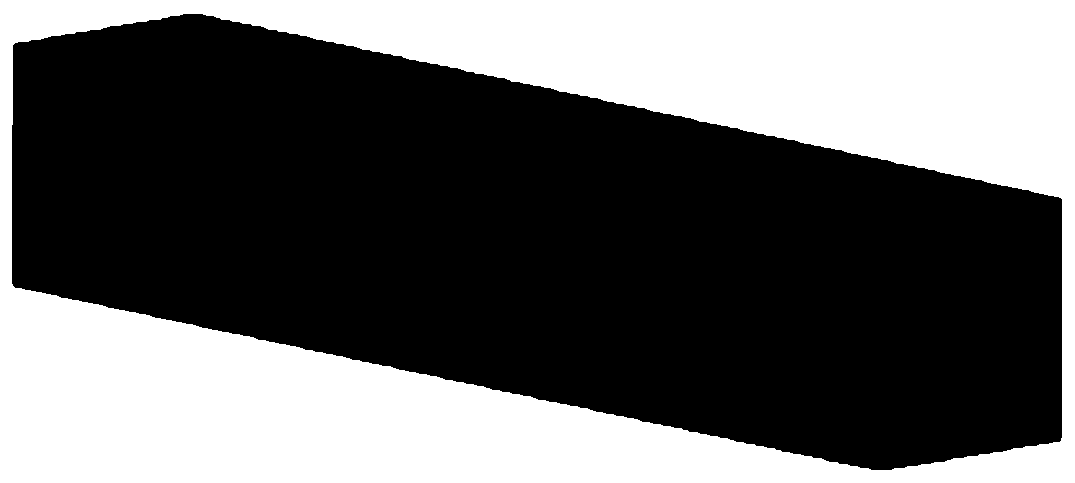Cavitation flow numerical simulation method based on Liutex-Omega vortex recognition theory
A numerical simulation and cavitation technology, applied in 3D modeling, image data processing, electrical digital data processing, etc., can solve the problem of low numerical accuracy of vortex cavitation flow, unable to reflect the characteristics of vortex cavitation flow, large deviation, etc. question
- Summary
- Abstract
- Description
- Claims
- Application Information
AI Technical Summary
Problems solved by technology
Method used
Image
Examples
Embodiment
[0079] In this embodiment, a three-dimensional hydrofoil with a blade tip clearance is used as an object to describe a cavitation flow numerical simulation method based on the Liutex-Omega vortex identification theory, such as figure 1 As shown, it mainly includes the following steps:
[0080] Step 1: The computational domain of the 3D hydrofoil with tip clearance is a rectangular flume, such as figure 2 a, 2b, the section of the three-dimensional hydrofoil is NACA0009 airfoil, the airfoil chord length C=0.1m, the length of the tank is 0.8m, the width is 0.15m, one side of the hydrofoil is connected with the side wall of the tank, and the other side is connected with it Adjacent walls have w tip = 1.98mm gap, use the geometric modeling software Croe to establish a three-dimensional geometric model of the computational domain, and output the *.igs format file for the computational grid division of step 2;
[0081] Step 2: Computational domain meshing, import the geometry fil...
PUM
 Login to View More
Login to View More Abstract
Description
Claims
Application Information
 Login to View More
Login to View More - R&D
- Intellectual Property
- Life Sciences
- Materials
- Tech Scout
- Unparalleled Data Quality
- Higher Quality Content
- 60% Fewer Hallucinations
Browse by: Latest US Patents, China's latest patents, Technical Efficacy Thesaurus, Application Domain, Technology Topic, Popular Technical Reports.
© 2025 PatSnap. All rights reserved.Legal|Privacy policy|Modern Slavery Act Transparency Statement|Sitemap|About US| Contact US: help@patsnap.com



